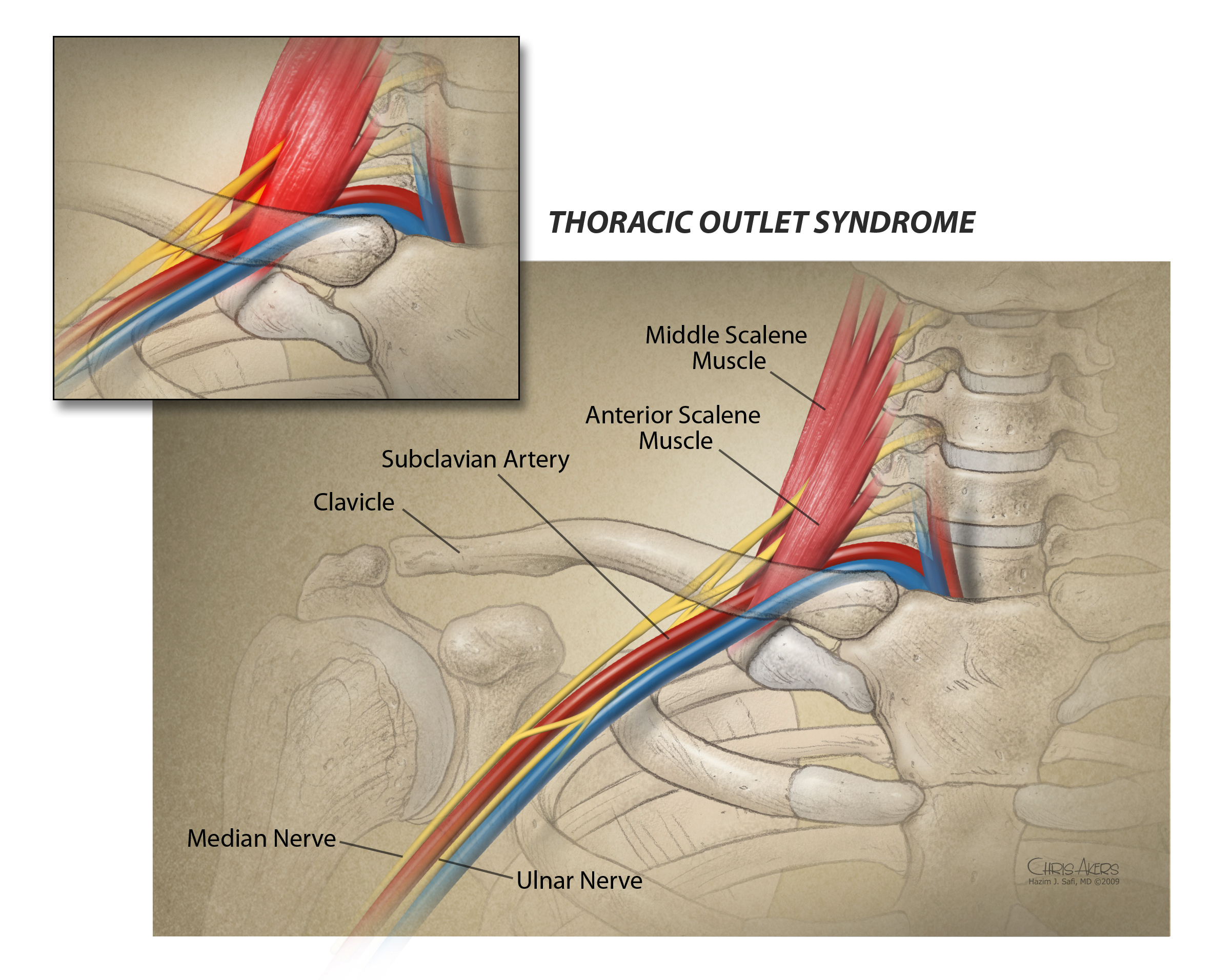Thoracic Outlet Syndrome (TOS)
TOS is caused by compression of nerves or blood vessels, or both, as a result of trauma, disease or congenital deformity in the thoracic outlet between the clavicle and first rib. Treatment begins with exercises to stretch and open the tissues associated with the thoracic outlet. If symptoms persist, surgery is an option. The surgeon makes an incision above the clavicle and removes scalene muscles, along with the first rib, easing pressure on the brachial plexus nerves. About 80 percent of patients experience complete resolution of symptoms; 20 percent report significant improvement.

What is TOS:
TOS effects the space between the collarbone and the first rib, where blood vessels and/or nerves in the area are compressed. There are three types of TOS:
- Arterial TOS is compression the subclavian artery which causes decreased blood flow to the arm
- Venus TOS is compression the subclavian vein and can lead to swelling and venous clot formation
- Neurogenic TOS is compression of a group of nerves called the brachial plexus and can cause nerve damage, pain and tingling in the arm and shoulder.
Symptoms of TOS:
- Pain, aches in your neck, shoulder or hand
- numbness in the fingers or arm
- discoloration or lack of color in your fingers or hand
- weak or no pulse in arm
- cold fingers/hands/arms
- arm fatigue
- throbbing lump near the collarbone.
What causes TOS:
TOS will often affect healthy, young, and active people. The condition is common among athletes who participate in sports that require repetitive overhand motions of the arm and shoulder, such as baseball, swimming, volleyball, and other sports. TOS can be caused by physical trauma, repetitive injuries, sports-related activities, and certain anatomical defects (having an extra rib). The subclavian artery, vein, and nerves travel behind the clavicle or collar bone. This space becomes compressed against the clavicle, the rib and the muscles.
Treatment:
TOS is sometimes treatable through medical and physical therapy. Surgery may be recommended to relieve the compression. Once treated, there are usually no long term effects and you should be able to return to an active lifestyle. Treatment will vary depending on the source and severity of the condition.
Diagnosing TOS:
See a thoracic outlet syndrome specialist if you have any of the symptoms listed. Your doctor will assess your symptoms, medical history, and physical examination. After your exam, your doctor may order further studies for evaluation.
Learn more about TOS on SVS.org.